#MTGmeta
Explore tagged Tumblr posts
Link
#creatureabilities#Magic:TheGathering#Monstrosity#monstrouscreatures#MTGbattles#MTGcardabilities#MTGcompetitiveplay#MTGdeckbuilding#MTGgameformats#MTGgameplay#MTGMechanics#MTGmeta#MTGstrategies#mtgtournaments
0 notes
Text
Wizards showing us who really means business and what it really means.
Foreword
So at the time I’m writing this, a little too late. Most of you should know by now of the recent banning announcement. Wizards officially banned Gitaxian Probe and Golgari Grave-Troll in modern while Standard has it’s first ban since 2011, Where Jace the Mind Sculptor as well as Stoneforge Mystic were deemed to be too powerful for Standard at that time.
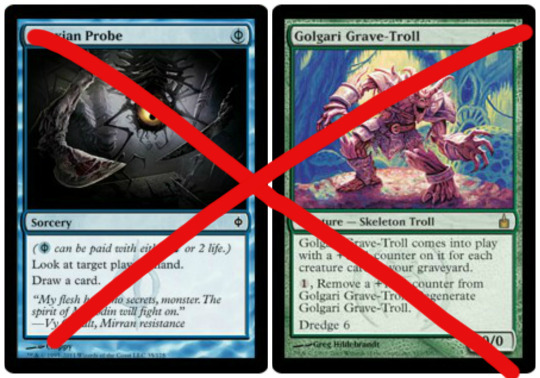

Now the modern bans were of course treated quite seriously, but the community was furious with the decision towards the banning of certain cards in Standard: Emrakul the Promised End, Smuggler’s Copter and Reflector Mage. Since the last Standard banning was over 6 years ago, it was quite an abrupt decision made by Wizards to ban 3 cards in Standard out of nowhere. But to further understand why these 3 cards were banned, we must first analyze the actual reasons Wizards gave for banning these cards in their respective formats.
Modern
So Grave-Troll and Gitaxian Probe were banned in modern. Both saw successive runs in certain top tier decks (Probe saw play in Infect,Suicide Zoo variants while Grave-Troll sky-rocketed Dredge to be a fearsome deck to deal with in the post Splinter Twin modern metagame).

In the explanation provided here by Wizards for the banning of Grace-Troll. It is clear that Wizards is clear that there is a problem going on in Modern, Dredge was way too unhealthy which caused a influx in the increase of hate for it in many decks’s sideboards. However, do note the phrase “the real offender has been the dredge mechanic itself.” Let’s face it, Grave-Troll is probably the best “dredger” in terms of value,power level and playability. None of the other Dredgers come quite close to Grave-Troll. In fact, to nerf/balance Dredge, you would have to get rid of the most powerful card it runs, in this case Grave-Troll. However, this does not downright mean Dredge will shift down a tier, it will simply be slightly slower but no stranger to it’s former power pre-ban.

And now..for the infamous Gitaxian Probe. Ever since Modern took off from it’s post-twin meta, Aggro did once again have a voice and say in Modern. And it did so in a very vibrant way of the Suicide Zoo variant, in which the deck revolves around the player taking as much self damage as possible in order to cast an extremely powerful Death’s Shadow for only 1 mana! Various archetypes of Suicide Zoo have popped up over time but Gitaxian Probe did too much to contribute to this powerhouse of a deck. It was also contributing a major part of Infect’s “engine”, which is now a top tier deck feared by many. But this Gitaxian Probe banning made me recall 2 very similar cards that are already banned in Modern…
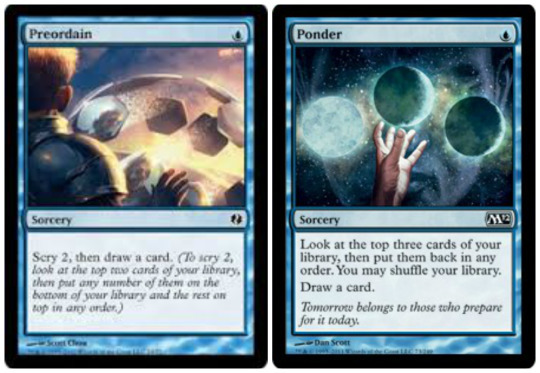
Ah yes…the 2 of the best cantrips ever made in Magic’s history, being deemed too powerful for Modern as it mainly pushed non-creature strategies to insane levels. But what do these 2 have in common with Probe?
Well if you mentioned it does “too much” for 1 mana…

In fact Gitaxian Probe theoretically cost 0 mana! So Modern is basically stripped of all it’s “value” cantrips leaving behind Serum Visions as it’s top candidate :/

Shocking isn’t it?
Standard
Now onto the main course and it’s glorious, spongy potato salad crest atop it. The Standard bans ladies and gentlemen..
Well hold on there..! Everyone still has their toes hot on this topic even though it’s more than a week after the announcement but I’ll try to analyze what was right and wrong to each banning.
Let’s start off small with Reflector Mage:

Now, Reflector Mage wasn’t a card that made huge impact in Standard, but this ban report claims that Reflector Mage was simply making the UW Flash deck too powerful, the ban report also states Reflector Mage had been “quite strong” in the day of Collected Company Standard. For me, Reflector Mage is indeed quite an annoying card, but it’s power level isn’t something so serious that it needed to be banned. Yeah, you could say whatever you want on how a major piece it was in Collected Company and UW Flash decks, but that doesn’t justify that decks entirely revolved around it.
Next up is the sneaky Copter

Before you all go over how powerful Smuggler’s Copter is, let this slowly sink in for you: “Kaladesh was released on 30th September 2016″, which means Smuggler’s Copter’s time in Standard was only around 3 months. Now..the card is ridiculously strong. A potential 3/3 for 2 is already value, consider also it’s low crew cost and it’s looting effect that could be used offensively and defensively for card advantage. The card overall was solid, but the real question is…
“Why would Wizards print an extremely powerful card, let it stay in Standard for 3 months and ban it?”
Exactly! Wizards knew Smuggler’s Copter was going to be a very powerful card in Standard, yet they still let it sink into the metagame for a while, saw their predictions come true then ban it! It’s not as if “Oh..there’s probably other vehicles to replace it”. No, people have actually spent a lot of money building up the deck, and Smuggler’s Copter isn’t a cheap card either. Standard also isn’t a format in which the banhammer always pays particular attention to, this will affect the future of Standard - in a way that new players would be afraid into certain decks over a fear that their cards would be banned.
And finally the biggest, baddest, strongest and possibly fattest Eldrazi of them all…there can only be one!

Now on the topic of Emrakul, this version had to be tuned down from the previous version of herself for her to even be playable.
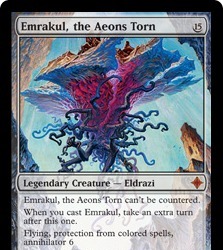
Yes…thank god the Promised End wasn’t as terrifying as this when this absolute monster was printed 6 years ago
But still, Promised End was still one hell of a force to be reckoned with. It’s cmc reduction, ability to use your opponent’s best cards against them, resulting in a more favored board position for yourself - all these were nothing but a small resemblance to her former self printed 6 years ago. Nonetheless, I felt she was still a card that was perfectly balanced in Standard, where it saw play in Aetherworks Marvel. Which I once again felt the deck did seem menacing being able to find Emrakul off Aetherworks, but this wasn’t a deck that had all the strengths and none of the flaws. In fact this doesn’t change much where there are other Eldrazi Titans such as Ulamog that are extremely powerful and have devastating effects when played.
But more importantly, if the slightly under-powered version of Emrakul is banned from Standard, why is the the original Titan still legal in Modern? Where it’s a more explosive format and there are multiple easy ways to cheat it into play?
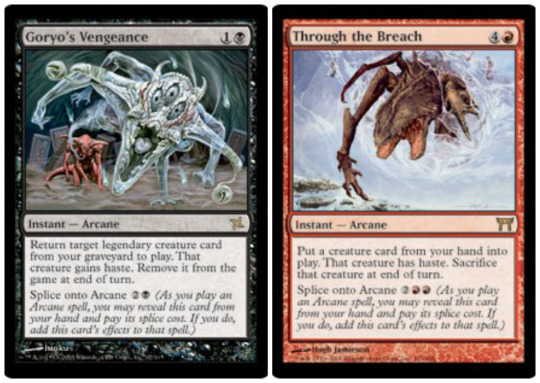
Now you might tell me “Oh..it’s Modern and the answers there are more reliable towards decks playing these..” , well you are half-right but like I mentioned earlier. There are answers to the Aetherworks Marvel deck! Wizards should have thought about the Modern example of decks cheating Emrakul, the Aeons Torn into play before deciding whether to ban it’s newer form in Standard!
What Standard might look like in the future..
Now most of you have probably heard Standard has a potential new meta-breaking deck..what? No? Alright…here it is.
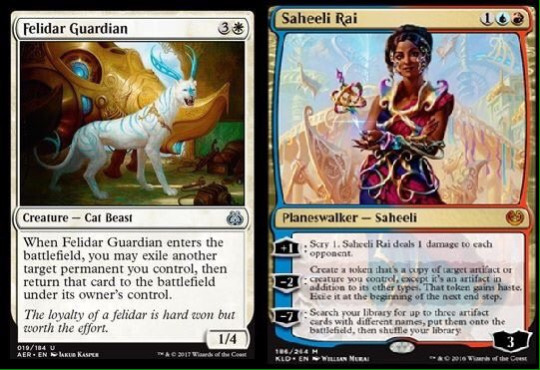
With Aether Revolt coming up, Standard is about to receive a literal Splinter Twin combo. While not as powerful as the original Splinter Twin combo, it does win on turn 4. While most players are extremely displeased with Wizards printing a pair of cards within the same block, then announcing the bans above. I would like to raise some motivation: the original Splinter Twin combo with Deceiver Exarch actually were playable in Standard, but even at that time it wasn’t even a top tier deck! To add on, this combo isn’t even as reliable or powerful as the original(Saheeli can be removed before Felidar is played,the combo can be shut down by Authority of the Consuls,if u arrange removal on the stack the combo can be disrupted). So do not be disheartened, we never know that this would dominate Standard, it might just be anyone’s game after all.

Orrrrrrrr maybe not, who knows?
Conclusion
Thus, it’s been a wild week for both Standard and Modern players alike, as well for many collectors and investors. For Standard, it does seem interesting to watch how the meta and other decks will perform with some decks getting nerfed after the bannings. On a good note, do have fun, embrace whatever your playing and I’ll see you soon!
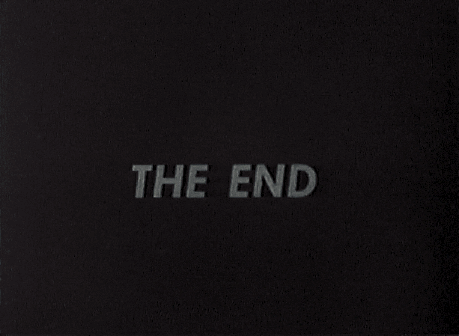
4 notes
·
View notes
Text
【MTG】かーむがよくお世話になってるMTG関連サイトを雑に紹介してみる~Part 2~ 【サイト集】

おっすおっす。
かーむです。
ちょっと前にMTG関連サイトの紹介記事を書きましたが、追加で紹介したいサイトが新たにいくつか出てきたのでPart2。
【MTG】よくお世話になってるMTG関連サイトを雑に紹介してみる
1:mtgmeta
2:Untapped.gg
事前準備
アカウント登録とアプリのインストール
インストールしたアプリの設定
アプリの設定
3:MTG Wiki
4:Wisdom Guild
5:mtg-story
1:mtgmeta
1つ目はmtgmeta。
mtgmeta.io
マジックフェストやミシックチャンピオンシップなどのプレミアイベントの詳細な結果が確認できるサイトです。
世界最大手のMTG専門オンラインストア、StarCityGames(SCG)が開催している「SCG Tour」の結果もここで確認できます。
英語サイトで…
View On WordPress
0 notes
Link
#AdventureMechanic#cardsynergies#creaturecards#deckbuilding#gamedynamics#gameplaymechanics#Magic:TheGathering#MTGDeckConstruction#MTGExpansion#MTGlore#MTGmeta#MTGstrategy#SpellCards#strategiccardplay#ThroneofEldraine
0 notes
Link
#artifactcard#boardstate#ChaliceoftheVoid#ControlDeck#convertedmanacost#counterspells#CrypticCommand#deckstrategies#gameeconomy#Magic:TheGathering#MTGmeta#SpellPierce#synergycombos#TormentofHailfire
0 notes
Link
#energyadvantages#energycards#energycombos#energycounters#energyeffects#energyinteractions#energymechanic#energyresources#Magic:TheGathering#mana#MTGdeckbuilding#MTGgameplay#MTGmeta#MTGstrategies#MTG'sEnergyMechanic
0 notes
Link
#ArtifactCards#cardcollecting#cardinteractions#cardinvestment#CardStrategy#deckbuilding#gamemechanics#Magic:TheGathering#MTG#MTGgameplay#MTGhistory#MTGmeta#MTGSets#mtgtournaments#MTG'sArtifactCards
0 notes
Link
#ArtifactCards#cardcollecting#cardinteractions#cardinvestment#CardStrategy#deckbuilding#gamemechanics#Magic:TheGathering#MTG#MTGgameplay#MTGhistory#MTGmeta#MTGSets#mtgtournaments#MTG'sArtifactCards
0 notes
Link
0 notes
Text
Exploring Unique Deck Archetypes in MTG Arena

In my years of playing Magic: The Gathering, I've discovered that understanding and mastering deck archetypes is a crucial step towards becoming a formidable player. Key Takeaways: Deck Archetypes - Understanding deck archetypes is crucial for becoming a formidable player in Magic: The Gathering. - Deck archetypes include Aggro, Control, Combo, and Midrange, each with unique strengths and playstyles. - Building your own deck allows you to express your personality, strategy, and find unique ways to outsmart opponents. - Choosing the right archetype and selecting the right cards are essential steps in building a successful deck. - To master the game, understand your opponent's strategy, adapt your playstyle, and climb the ranks in MTG Arena. Understanding Deck Archetypes

So, what exactly are deck archetypes? In Magic: The Gathering, a deck archetype refers to the strategy that your deck is built around. It's the blueprint that guides your card selection, playstyle, and overall game plan. There are several main MTG deck archetypes that you'll encounter in MTG Arena, each with its unique strengths, weaknesses, and playstyle. These include Aggro, Control, Combo, and Midrange decks. We'll delve deeper into each of these deck archetypes in the following sections. To give you a quick overview, here's a table summarizing the main characteristics of each archetype: Deck Archetype Main Strategy Playstyle Aggro Fast, aggressive play to defeat opponents quickly Direct, confrontational Control Manipulate the game state to your advantage Reactive, strategic Combo Use card synergies to create powerful effects Creative, complex Midrange Balance between Aggro and Control Flexible, adaptable Remember, understanding deck archetypes is just the first step. The real fun begins when you start brewing your own decks and testing them in the arena. So, let's embark on this exciting journey together and unleash your inner brewer!
The Journey to Becoming Your Own Brewer
As we delve deeper into the world of MTG Arena, it's time to embrace your inner strategist and understand the importance of unique deck archetypes. This journey is all about finding your personal playstyle and creating a deck that truly reflects it. Embracing Your Inner Strategist In my years of playing Magic: The Gathering, I've learned that the most rewarding part of the game is brewing your own deck. It's a creative process that requires a deep understanding of the game mechanics, the meta, and the different deck archetypes. Brewing your own deck is not just about winning games. It's about expressing your personality and strategy through the cards you choose and the way you play them. It's about finding unique and unexpected ways to outsmart your opponents. And most importantly, it's about having fun! The Importance of Unique Deck Archetypes

When it comes to brewing your own deck, understanding the different deck archetypes is crucial. Each archetype represents a different strategy and playstyle, and the deck you choose to build will greatly influence your gameplay. For instance, if you enjoy fast-paced games and direct confrontations, an Aggro deck might be the perfect fit for you. On the other hand, if you prefer a more strategic and reactive playstyle, a Control deck could be your best choice. But remember, the beauty of MTG Arena lies in its diversity. You're not limited to the traditional archetypes. You can mix and match different strategies, create hybrid decks, or even come up with your own unique archetype. The possibilities are endless! To help you get started, here's a table summarizing the main strengths and weaknesses of each archetype: Deck Archetype Strengths Weaknesses Aggro Fast, aggressive, good against slow decks Weak against control, susceptible to board wipes Control Good against aggro, strong late game Slow, weak against combo Combo Powerful synergies, can win out of nowhere Inconsistent, vulnerable to disruption Midrange Flexible, adaptable, good against control Jack of all trades, master of none Remember, the key to becoming a successful brewer is to experiment, learn from your mistakes, and never stop having fun. So, let's continue our journey and explore the different deck archetypes in more detail!
Exploring Different Deck Archetypes
Now that we've laid the groundwork, it's time to delve into the heart of Magic: The Gathering - the deck archetypes. Each archetype offers a unique playstyle and strategy, and understanding them is key to becoming a successful player and deck brewer. Aggro Decks: Fast and Furious First up, we have the Aggro decks. These decks are all about speed and aggression. They aim to defeat the opponent as quickly as possible by deploying a flurry of creatures and attacking relentlessly. In my experience, playing an Aggro deck is like being in the driver's seat of a race car - it's fast, it's thrilling, and it requires a bold and assertive playstyle. Control Decks: The Art of Saying 'No' On the other end of the spectrum, we have the Control decks. These decks are the chess players of MTG Arena. They aim to control the game by manipulating the game state, countering opponent's spells, and removing their creatures. Playing a Control deck is a test of patience and strategy. It's about saying 'no' to your opponent's plans and slowly but surely steering the game in your favor. Combo Decks: The Magic of Synergy Next, we have the Combo decks. These decks revolve around powerful card synergies that can turn the tide of the game in an instant. They often involve a combination of cards that, when played together, can create devastating effects or even win the game outright. Playing a Combo deck is like solving a puzzle - it's complex, it's creative, and it's incredibly satisfying when all the pieces fall into place. Midrange Decks: Best of Both Worlds Last but not least, we have the Midrange decks. These decks strike a balance between Aggro and Control. They aim to control the early game with efficient creatures and spells, then transition into a powerful late game with high-impact cards. Playing a Midrange deck is about adaptability and versatility. It's about being able to switch gears depending on the state of the game and the strategy of your opponent. Here's a quick comparison of the four main deck archetypes: Deck Archetype Playstyle Strategy Example Cards Aggro Fast, aggressive Defeat the opponent quickly with creatures and direct damage Goblin Guide, Lightning Bolt Control Slow, strategic Control the game state, counter spells, remove creatures Counterspell, Wrath of God Combo Complex, creative Use card synergies to create powerful effects or win the game Thopter Foundry, Sword of the Meek Midrange Flexible, adaptable Control the early game, transition into a powerful late game Tarmogoyf, Siege Rhino Remember, these are just the basic archetypes. The beauty of MTG Arena is that you can mix and match these strategies to create your own unique deck. So, let's move on to the next step of our journey - building your unique deck!
Building Your Unique Deck

Now that we've explored the different deck archetypes, it's time to roll up our sleeves and start brewing your unique deck. This process involves choosing your deck archetype, selecting the right cards, and testing and tweaking your deck until it's just right. Choosing Your Deck Archetype The first step in building your deck is choosing your deck archetype. This decision will guide your card selection and define your overall strategy. Remember, there's no 'best' archetype - it all depends on your personal playstyle and what you enjoy the most. If you love fast-paced games and direct confrontations, an Aggro deck might be your best choice. If you prefer a more strategic and reactive playstyle, a Control deck could be the way to go. If you enjoy complex card interactions and surprising your opponents, a Combo deck could be your cup of tea. And if you like to adapt and change your strategy on the fly, a Midrange deck could be the perfect fit. Selecting the Right Cards Once you've chosen your deck archetype, the next step is selecting the right cards. This is where your knowledge of the game and the meta comes into play. You'll need to choose cards that synergize with your strategy and give you an edge against your opponents. For instance, if you're building an Aggro deck, you'll want to include fast, efficient creatures and spells that can deal direct damage to your opponent. If you're building a Control deck, you'll need counterspells, removal spells, and card draw to control the game and outvalue your opponent. Testing and Tweaking Your Deck After you've selected your cards, it's time to test your deck. This is a crucial step in the deck building process. It allows you to see how your deck performs in real games and identify any weaknesses or areas for improvement. Don't be discouraged if your deck doesn't perform well at first. Deck building is a process of trial and error, and it's normal to make adjustments along the way. Remember, the goal is not just to win games, but to have fun and express your creativity through your deck. Here's a quick summary of the deck building process: Step Description Choose your deck archetype Decide on your overall strategy and playstyle Select the right cards Choose cards that synergize with your strategy Test and tweak your deck Play games, identify weaknesses, make adjustments Now that you've built your unique deck, it's time to master the game and climb the ranks in MTG Arena. Let's continue our journey!
Mastering the Game with Your Deck

With your unique deck in hand, you're ready to dive into the competitive world of MTG Arena. But building a great deck is just the first step. To truly master the game, you'll need to understand your opponent's strategy, adapt your playstyle, and climb the ranks in MTG Arena. Understanding Your Opponent's Strategy One of the keys to success in Magic: The Gathering is understanding your opponent's strategy. This involves recognizing their deck archetype, predicting their moves, and adapting your game plan accordingly. For instance, if you're playing against an Aggro deck, you'll need to prioritize survival and stabilize the board. If you're up against a Control deck, you'll need to play around their counterspells and removal. And if you're facing a Combo deck, you'll need to disrupt their synergies and apply pressure before they can execute their combo. Adapting Your Playstyle In addition to understanding your opponent's strategy, you'll also need to adapt your playstyle based on the state of the game. This is especially important in MTG Arena, where the meta is constantly evolving and no two games are the same. For example, if you're ahead, you might want to play more conservatively to protect your lead. If you're behind, you might need to take more risks to turn the tide. And if the game is evenly matched, you'll need to make smart, calculated decisions to gain an edge. Climbing the Ranks in MTG Arena Finally, with your unique deck and your strategic skills, you're ready to climb the ranks in MTG Arena. This is where all your hard work pays off. Each victory will bring you closer to the top, and each defeat will be a valuable learning experience. Remember, the journey is just as important as the destination. So, enjoy the process, learn from your games, and never stop improving. You're not just a player - you're a brewer, a strategist, and a master of deck archetypes. Here's a quick recap of what we've covered in this section: Key Point Description Understand your opponent's strategy Recognize their deck archetype, predict their moves Adapt your playstyle Change your strategy based on the state of the game Climb the ranks Play games, learn from your experiences, improve your skills Now, let's wrap up our journey and look towards the future of deck building in MTG Arena!
Conclusion
As we reach the end of our journey, it's time to reflect on what we've learned and look forward to the future of deck building in MTG Arena. Recap of Your Journey We started by introducing the world of MTG Arena and the concept of deck archetypes. We then explored the journey of becoming your own brewer, embracing your inner strategist, and understanding the importance of unique deck archetypes. We delved into the different deck archetypes, including Aggro, Control, Combo, and Midrange decks, each offering a unique playstyle and strategy. We then guided you through the process of building your unique deck, from choosing your deck archetype to selecting the right cards and testing and tweaking your deck. Finally, we discussed how to master the game with your deck, understanding your opponent's strategy, adapting your playstyle, and climbing the ranks in MTG Arena. The Future of Deck Building in MTG Arena Looking forward, the future of deck building in MTG Arena is bright and exciting. With new cards being released regularly, the meta is constantly evolving, offering fresh challenges and opportunities for deck brewers. Whether you're a seasoned player or a newcomer, there's always something new to learn and explore in MTG Arena. So, keep brewing, keep experimenting, and most importantly, keep having fun! Remember, Magic: The Gathering is not just a game - it's a community. So, share your decks, discuss strategies, and learn from other players. Together, we can make the world of MTG Arena a richer and more enjoyable place. Thank you for joining me on this journey. I hope you've found this guide helpful and inspiring. Now, go forth and unleash your inner brewer!
Related Reading and References
To further your understanding of deck archetypes and enhance your MTG Arena experience, I've compiled a list of additional resources. These include articles, guides, and forums where you can learn more about the game and connect with other players. Further Reading on Deck Archetypes If you're interested in delving deeper into the world of deck archetypes, here are a few resources that I've found particularly helpful: - "Understanding MTG Archetypes" on ChannelFireball: This comprehensive guide provides an in-depth look at the different deck archetypes and their strategies. - "Deckbuilding 101" on MTG Goldfish: This series of articles covers the basics of deck building, including choosing your deck archetype and selecting the right cards. - "MTG Arena Meta Decks" on AetherHub: This resource provides a snapshot of the current meta, including the most popular deck archetypes and their win rates. References Used in This Post The information in this post was compiled from a variety of sources, including my personal experience as an MTG player and blogger, as well as the following resources: - Magic: The Gathering Official Website: The official website of Magic: The Gathering, featuring news, articles, and resources about the game. - MTG Arena Official Website: The official website of MTG Arena, featuring news, updates, and resources about the digital game. - MTG Salvation Forums: A community forum where players discuss strategies, share decks, and exchange ideas about the game. Remember, the journey of becoming a master brewer doesn't end here. Keep exploring, keep learning, and keep enjoying the game. Happy brewing!
Frequently Asked Questions (FAQs)
As we wrap up our journey into the world of MTG Arena and deck archetypes, let's address some common questions that players often have. These FAQs cover the basics of MTG Arena, choosing the right deck archetype, and improving your deck building skills. What is MTG Arena? MTG Arena is a digital adaptation of the classic card game, Magic: The Gathering. It allows players from around the world to compete against each other using a variety of deck archetypes. The game offers a rich and diverse meta, with countless strategies to explore and master. How do I choose the right deck archetype? Read the full article
#DeckArchetypes#deckbuilding#MTGArena#MTGArenaGuide#MTGBrewer#MTGDeckArchetypes#MTGDeckBuildingGuide#MTGGameMaster#MTGmeta#MTGstrategy
0 notes
Link
#futureofPlaneswalkers#Magic:TheGathering#MTGArena#MTGartanddesign#MTGcarddesign#MTGcharacters#MTGcommunity#MTGgameplay#MTGhistory#MTGlore#MTGmeta#MTGstrategy#MTGtrends#Planeswalkercards#Planeswalkers
0 notes
Link
#emotionalattachmenttoMTG#Magic:TheGathering#MTGaddiction#MTGcardcollecting#MTGcardtrading#MTGCommunityEngagement#MTGdeckbuilding#MTGgameplay#MTGintellectualchallenge#MTGmeta-game#MTGnostalgia#MTGstrategies#mtgtournaments#socialinteractioninMTG
0 notes
Link
#AlternativestoHullbreacher#Commanderformat#CompetitiveplayinMTG#deckbuildingstrategies#GamebalanceinMTG#Hullbreacherimpact#Hullbreacherlegacy#HullbreacherMTG#Magic:TheGatheringcarddesign#MTGcardbans#MTGcommunityreactions#MTGgamedynamics#MTGmeta-game#UnderstandingMTGbans#WhyisHullbreacherbannedMTG#WizardsoftheCoastpolicies
0 notes